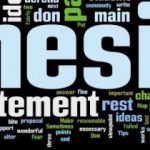What is true hands on learning?
What Our Hands Can Teach Us: What is Truly Hands On Learning?
What is it that our hands can teach us? Why are so many curricula, textbooks, dollar store education products, etc. labeled with “hands on learning”? What is this whole phenomena about after all? It is true that this phrase: “hands on learning” is a fantastic marketing ploy slapped on many learning products. Unfortunately it isn’t always used accurately as a true descriptive word of our educational materials. Understanding what “hands on learning” really means will help us weed through the various products so we can offer our students a true hands on learning experience.
Hands on learning is really a description of opportunity for our students to actually manipulate real materials to understand the literal way “things” work. This experience can be an abstract synthetic/model version or the actual material being learned about or a real experience or use of equipment for true experience. Students can receive an authentic hands on learning experience by making replicas of electrons and fusing them with multiple atoms to create models of chemical compounds. It’s a literal representation in a larger more tangible form for students to work with physically to see what is happening at a much smaller atomic level. Other students can get a hands on education by using blocks to count and move around to best understand a mathematical problem or equation. While it’s not an actual experience with numbers, the model serves as a tactile and touchable way of understanding numbers.
Another very literal “hands on learning” opportunity would be to handle the literal learning material. A science student will learn most about a microscope with a real microscope and some slides. A language student will learn a new language faster in an immersion situation. While the hands aren’t literally being used for this learning it is a real experience that will almost force a better way of learning through necessity and the surrounding of the language being learned.
There are many workbooks with labels promoting themselves as “hands on” but the only “hands on” thing about it is that our child’s hands will be on the workbooks and pencils they are pushing. Our kids will not learn to count money better because we bought them a work book that says it’s “hands on” but merely includes several pages of pictures of coins and bills. On the contrary, giving our children real money and actually counting it, manipulating it, and taking or adding more coins and bills to it will be a more valuable experience. Setting up situations and models of how a child would actually use money, such as a store, a bank, a “paycheck” scenario, or the likes would be a hands on learning choice.
“Hands on learning” is a tactile and touchable or immersive way of providing learning opportunity that makes the most sense to our students. The reality of learning through tangible materials, with real life application will always be the best way we can provide the most meaningful, memorable, and practical learning experience. Understanding what real “hands on learning” is will save us from making the mistake of wasting money and time on products and materials that are not truly “hands on” tactile learning equipment.
13 Ideas for Hands On Learning
- Play store with real money to practice counting change.
- Study an animal then create a biome diorama.
- Plan, prepare, plant a garden.
- Build a volcano (vinegar and baking soda).
- Act out a famous historical event.
- Use legos to add, subtract, multiply, divide.
- Double a recipe to work with fractions.
- Jump rope while reciting multiplication facts. (“Skip rope counting”)
- Smear shaving cream on a tray then practice writing spelling words in the foam.
- Create life-sized graphs with favorite toys.
- Create a video adaptation of a short story.
- Write a letter to a far-away relative using a concept just learned in language arts.
- Research then dress up like an historical figure. Conduct an interview.
Lisa Blauvelt (with her family and three dogs, two cats, a horse, pony, donkey, two red eared turtles, a fluctuating number of tadpoles and baby fish, and various other creatures collected by her adventurous boys) puts her education degrees to work at her home in the Deep South. There she teaches not only her own children, but others who come to her home to learn. Her decade long experience in teaching children to read will soon be published as a 476 page guide for parents.




